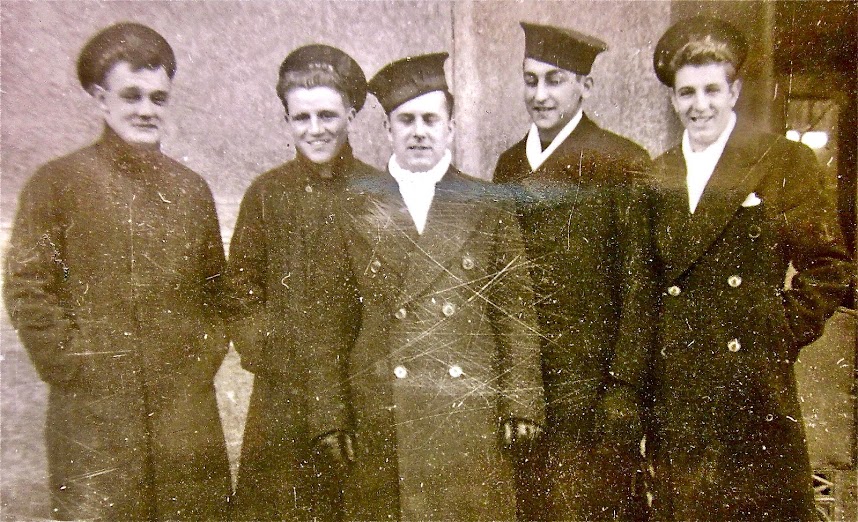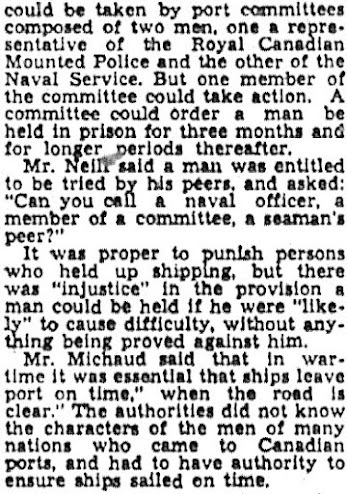The Allies' 2nd Week in Sicily Begins. "Surrender or Die!"
Blazing Inferno. Canadians Win Monty's Praise, and More
The Drive for Messina, 10 July - 17 August 1943: A panoramic view of
the Catania Plain. Through the mist in the distance is Mount Etna.
Introduction:Faithful readers of the previous posts - in this lengthy series (so far) - are reminded now that 'Three Months in the Mediterranean, 1943' will be a long slog, somewhat like Allied progress north to Messina, before the Strait of Messina was crossed beginning on September 3, 1943 (Operation Baytown), i.e., the invasion of Italy at the toe of the boot. And then it took eight months for Allied forces to reach and liberate Rome. Talk about your long, tough slog. They were only about half way done!
I make no guarantees but I'm pretty sure I'll finish sharing news articles from The (Montreal) Gazette, published from early July to early October, 1943, in less than eight months.
That being said, those three months in 'The Med' - during which a few hundred Canadians in Combined Operations served, consistent with accounts written by Canadian sailors (including my father) and their officers - are filled with interesting and very rare stories, and I'm deep into those stories. So, this series may run into 40 or more parts.
Just to let you know.
The Gazette continues:
The second week in Sicily begins with 'the point of a sword':
Shall we mince words?
Canadian military forces are on foot in Sicily, and in the air as well:
Operazione Husky 1943 by Salvo Fagone. More details below.
Ricognitori Su Husky by Salvo Fagone. More details below.
Related to research re Sicily and an upcoming trip to the island, I have made a connection with an Italian writer, Salvo Fagone, whose interest relates to World War II in the Mediterranean. Below is a third photograph related to three Mr. Fagone's works, used with his permission, and as one can see, Mr. Fagone's interests are many, touching on air reconnaissance, Ultra intelligence, the bombardment of Sicily and more. (When I visit Catania, Sicily, in the coming weeks I am certain my meeting with the well-studied writer will be of great interest, and a 'trip highlight' indeed).
I will forward the following article to Mr. Fagone. I wonder if he knows about "the creaking German kites of antique vintage":
Next: I wonder if Monty is referring to Canadians (RCNVR, including my father) in Combined Ops, who have been loading, unloading and driving various landing crafts non-stop - filled with all the materials of war - since D-Day July 10, when he says, "the Canadians were terrific on the beaches":
War correspondent Ross Munro, and Peter Stursberg (of the CBC),
mentioned in the last paragraph above, hitch a ride. Modica, Sicily
Axis bomber airdrome at Foggia (Italy) a major target:
Of the 20,000 prisoners, some began to help unload landing crafts near Avola and Noto (south of Syracuse, with the Canadian 81st Flotilla:
From St. Nazaire to Singapore: The Canadian Amphibious War 1941 - 45,
Volume 1, page 185. (Stories by RCNVR WWII veterans)
Speaking of POWs. Two more references found below:
Speaking of even more references related to Prisoners of War...:
Map as found in Combined Operations by Londoner Clayton Marks, page 76
Catania, not listed, is south of 'Mt. Aetna'. east coast north of Augusta
The Allies advance toward Catania. Source of map is unknown
"NAZIS HURLED BACK" continues:
This article mentions the plan to man merchant ships with 'ordinary seamen' from Canada. It sounds like a role played by members of RCNVR, since 'ordinary seaman' (OS) is one of the earliest ranks in the Royal Canadian Navy Volunteer Reserve, followed by Able Bodied Seaman (AB), Leading Seaman (LS), and more. My father speaks of taking exams while serving his first two years overseas in RCNVR and Combined Operations, moving up from OS to AB, then to LS, and finally to LS Coxswain. That being said, the merchant ships may have been manned by the merchant marine ("the unknown navy"), which is another avenue men chose to take to the high seas:
For those interested in the distinction between the Canadian Navy and Merchant Navy, I recommend the book below, perhaps found in a new/used bookstore near you:
Front cover photo is of Bedford Basin, Halifax, Nova Scotia
"Canadians to Man 75 Merchant Ships" continues:
A bit of background related to Ross Munro, Canadian war correspondent, follows:
As Germans slowly retreated towards "the back door" of the island (i.e., Messina, and transport ships to escape the Allied advance), they fought a tough defensive game. But it was a game that occasionally included shooting Italian troops in the back:
Three short clips in a row, aka "Look out below! Here comes your chaplain!"; "Hey, have you seen this photo?"; and, "Why is my train so late?":
.jpg)
Voo-Doo, a WACO Hadrian CG-4A Glider. "Hop in, Padre!" Library and
Many gliders and lives were lost during the first days of Operation Husky,
beginning July 10, 1943. Photo from Album 62 DND. Taken by CFPU, i.e.,
Canadian Film and Photo Unit, Photographer - Dolan, Aug. 6, 1943. 22545
Canadian troops, re 'Fall of Catania.' Photo 22553, CFPU Album 62,
DND, No. 22553. Photographer Dolan, 6 Aug. 43 (on page 3 of 65)
Lionel Shapiro, Canadian war correspondent mentioned in the above news clipping, wrote an excellent book re the invasion of Sicily (
They Left the Back Door Open), in which the following photograph is found:

"... I knew at once the supreme purpose of sea power in a world war ..."
We read above that "Calabria was damaged... railway sidings were destroyed," etc. in the news clip above. My father says the following in memoirs about the invasion of Italy (beginning September 3), 1943, and the extensive damage as seen from his front row seat, i.e., the view from a Landing Craft, Mechanised (LCM) on D-Day Italy - on the toe of the boot:
"Soon all the boys returned to Malta (in August) and we prepared for Italy, though all our barges stayed in Sicily. We took a Landing Ship Tank (LST) back to Mili Marina, Sicily, and if memory serves me correctly, attacked Italy at Reggio di Calabria across Messina Straits on my birthday, September 6, 1943. (Dad was three days off re D-Day, though he did celebrate his birthday with mates, good weather and vino on the 6th). There was no resistance. The air force had done a complete job and there wasn’t a whole building standing and the railroad yards were ripped to shreds. How long we worked across the straits I cannot really recall, but perhaps into October.
One of our stokers set up a medical tent for the civilians at Messina and treated them for sores and rashes. We fed them too but when pregnant women came we had to close up shop.
From "Dad, Well Done," page 35A bit of news concerning a friendly (?) rivalry between the U.S. and Canada, and it isn't about a hockey game:
While Canadians in Combined Operations were transporting materials of war to the beaches on Sicily's eastern shore, Canadian troops were busy elsewhere...
News from another front:
And about those "baby flat-tops" mentioned above:
HMS Biter (D97) underway in March 1943, location unknown. On deck are two
Fairey Swordfish strike aircraft. Image was taken by Lt. S.J. Beadell, RN official
photographer, and is from the official Imperial War Museum Collections, FL 2164
Original caption states "on deck are a Grumman Martlet and a Fairey Swordfish."
More information about 'baby flat-tops', WWII can be found at
navsource.org
A future pilot, caught in action:
The playing field for the 'U-Boat War' is starting to tilt in favour of Allied forces:
Photo and more information re submarine warfare -
defense.gov
Canadian sailors liked getting pictures from 'back home' as well as posing for one. My father (left) and mate Al Kirby from Woodstock, Ontario, stand on guard somewhere in the United Kingdom:
Landing Ship for Tanks (LST) unloads vast supplies upon its own (Rhino)
bridge (center) while an LCM (right) approaches the shore. Source unknown

















































.jpg)
















